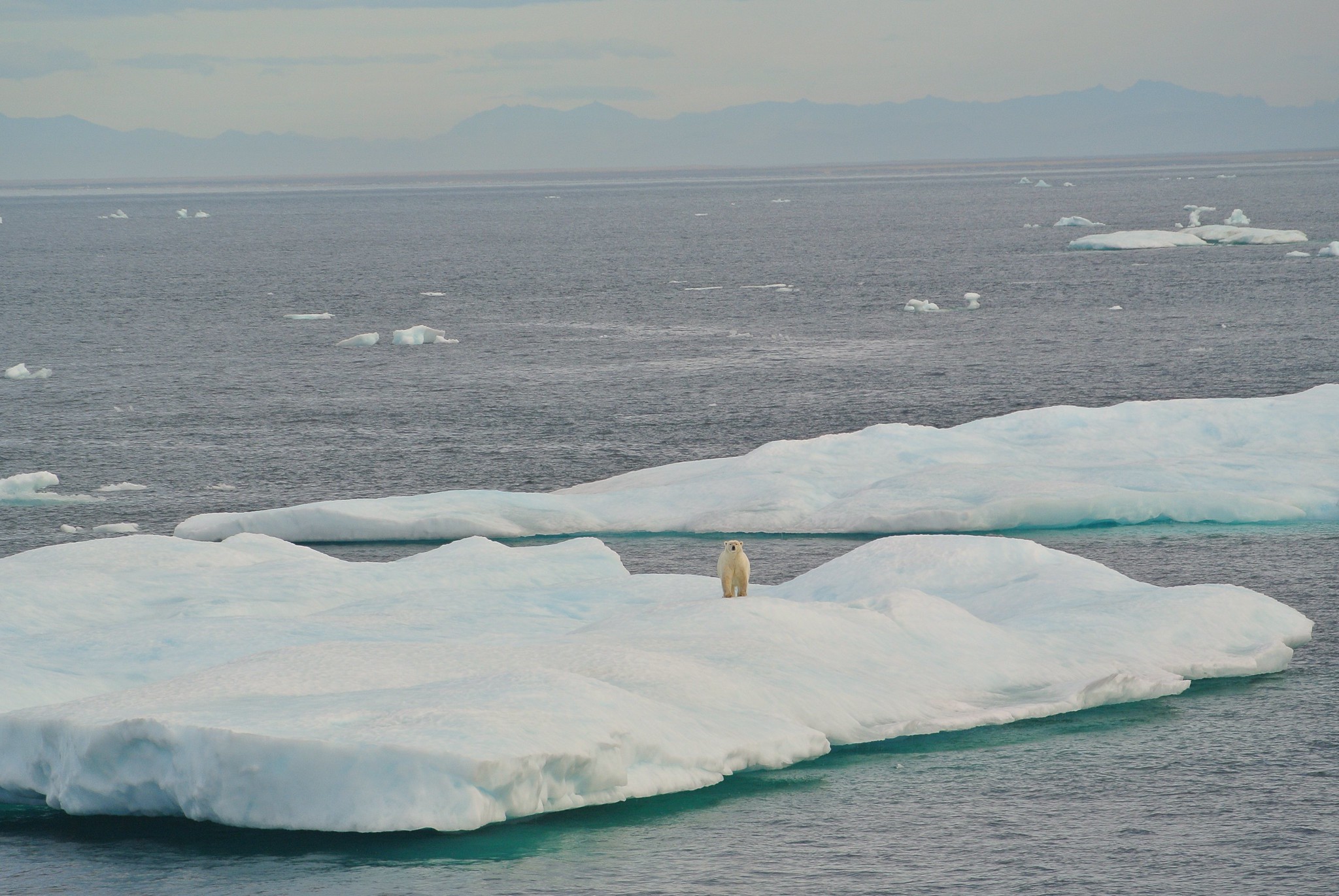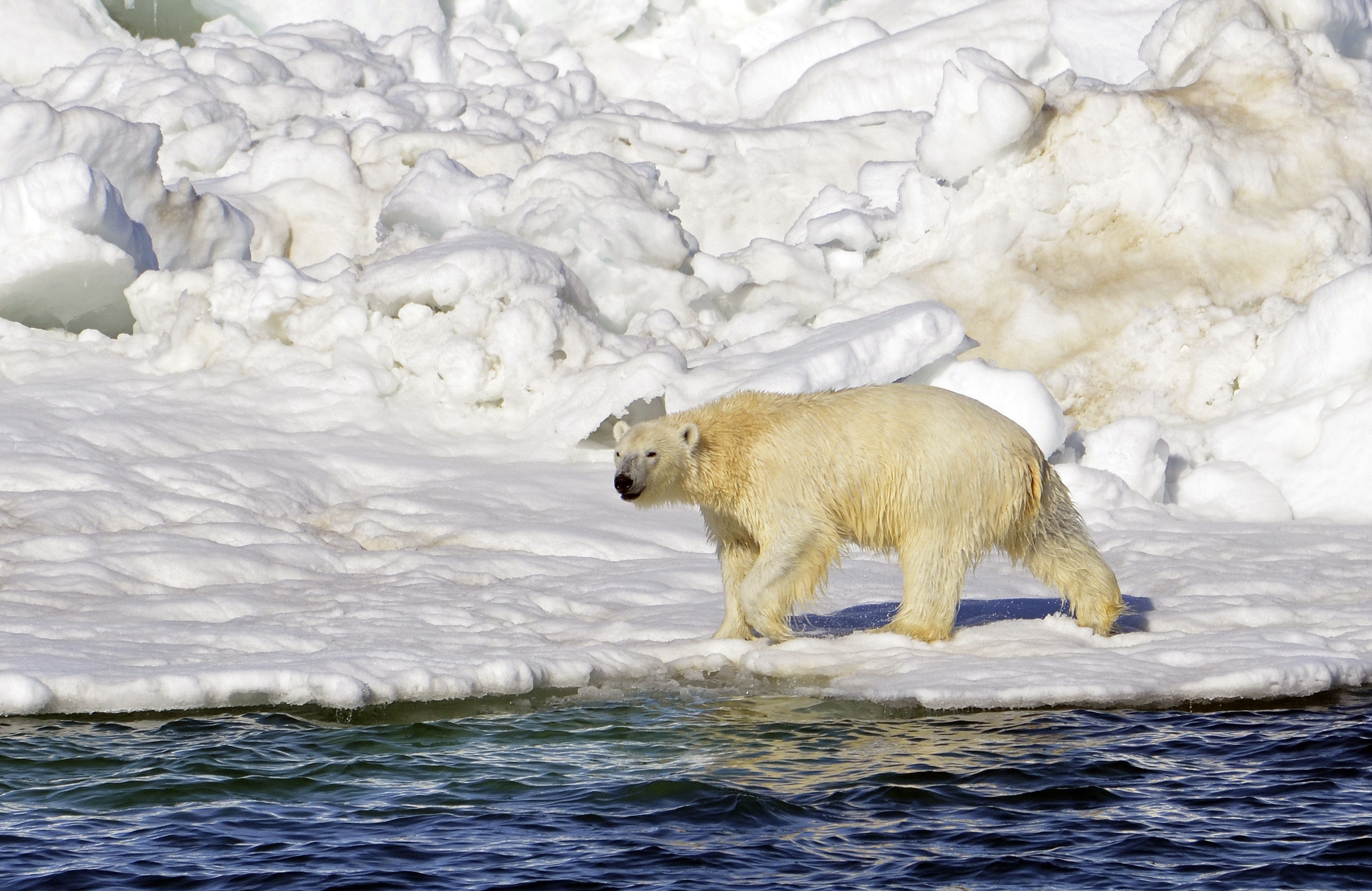Most polar bear populations will collapse by century’s end without emissions cuts, study says
Two southern populations are virtually guaranteed to be gone by 2080 under the current emissions scenario.

If global carbon emissions continue at their current rate, only a handful of polar bear populations — located in very far north Arctic island regions that are expected to hold the last year-round sea ice — will still survive by the end of the century, a new study asserts.
The study, published in the journal Nature Climate Change, is the first to project long-term survival rates for all 19 of the world’s polar bear populations. It calculates the rate of ice melt and open-water expansion, the length of time that bears can go without food while waiting for winter’s return and the effects on reproduction and cub survival.
[A new polar bear denning study is a mixed bag for Alaska’s oil industry]
The fate of the cubs ultimately determines the fate of all polar bears, said co-author Steve Amstrup, chief scientist for the nonprofit Polar Bears International.
“We know that if there are no cubs being brought into the population, then ultimately the population will collapse,” said Amstrup, who moved to the Montana-based nonprofit after heading the polar bear research program at the U.S. Geological Survey in Alaska.
After cubs, the death spiral will reach yearlings, followed by adult males and adult maternal females. Solitary adult females without cubs will the last to succumb, according to the study’s calculation.
At current rates of emissions, two of the polar bear populations are virtually certain to have complete reproductive failure by 2080, and six are very likely to have complete reproductive failure by then, according go the calculations.
If carbon emissions are moderately curtailed, keeping global temperatures at 2.4 degrees Celsius above pre-industrial levels, the outcome for polar bears is marginally better.

Under either scenario, only one population — in the Queen Elizabeth Islands in the Canadian Arctic Archipelago — would be safe from total reproductive failure, according to the study.
The new study’s approach of calculating times of food availability differs from past work by scientists who have had to rely on on-site observations, measurements and radio-tracking to monitor bears populations and body conditions.
The new study focuses on environmental conditions in summer and fall, the period when the ice that polar bears use to hunt seals is absent. The longer that open-water period is, the longer the bears will go without food before the ice returns. “It’s all about energy — how much energy they can gain and how much they will lose fasting,” Amstrup said.
That energy is crucial for maternal bears, he said. They need to be fattened up before they retreat to their dens for months to successfully give birth to and nurture cubs.
The most vulnerable polar bear populations identified by the study are in the Barents Sea and Southern Hudson Bay, regions on the southern edges of the global polar bear range. For those populations, reproductive collapse is inevitable by 2080 if current emissions rates continue.
[The effects of Arctic sea ice retreat are showing up in polar bear poop now]
Populations off Alaska, which are some of the best-studied in the world, are almost as vulnerable, but with staggered timing for future problems, according to the study.
The Southern Beaufort Sea population is already in trouble, with numbers declining 25 percent to 50 percent in recent years and body condition also declining. The Chukchi Sea population, shared between Alaska and Russia, is currently in much better shape, with a stable population, according to recent research.
The Beaufort-Chukchi differences are largely attributed to different configurations of the continental shelf. The shelf provides a shallow platform where ocean productivity is high; that is the area where polar bears and other marine mammals like walruses find their meals.
In the Beaufort, the shelf is narrow; ice retreat beyond it leaves polar bears with deep and unproductive waters. “It’s kind of like the thinnest soup in the Arctic in terms of productivity up there,” Amstrup said.
The Chukchi, in contrast, lies almost entirely over the continental shelf, the remnant of what was a land bridge between Asia and North America. It’s teeming with productivity and marine life. So even when ice retreats far offshore, polar bears can still hunt for seals over the continental shelf, Amstrup said.
Over time, problems in the Chukchi will catch up to those in the Southern Beaufort Sea, he said. “Eventually, there will be so little ice remaining in the Chukchi Sea that bears won’t be able to survive there.”
Across the Arctic, the new study’s population projections likely err on the side of optimism, he said. The fasting-impact thresholds are likely to be reached far earlier than 2080, he said. The calculations used a conservative baseline for energy needs, and were also cautious about predictions of ice loss.
In reality, ice loss has proceeded faster than previously predicted. While there are year-to-year and location-to-location variations in the short term, the long-term trend shows strong declines in freeze and increases in open water. Scientists believe the Arctic will be ice-free in summer by mid-century. Currently, Arctic sea ice extent is lower for this time of the year than in any year in the satellite record, according to the National Snow and Ice Data Center.
Still, there is a different possible outcome for polar bears — a scenario in which carbon emissions are dramatically reduced, which was not used in the study.
If emissions are reduced to target levels established in the Paris Agreement, limiting global warming to 1.5 degrees Celsius above pre-industrial levels, the outlook for polar bears is brighter, Amstrup said. In that way, polar bears are thus an indicator for the planet’s health, he said.
“If we halt warming and save up the ice to save polar bears, that would have direct benefits for the rest of Earth,” he said.
[Russian researchers are seeing more cannibalism among polar bears]
Aside from action to halt climate change, there are possible protective steps that can be taken directly in polar bear habitat. That includes steps on land, where more polar bears are gathering or extending their stays because of sea ice retreat.
In Russia, the government of Yakutia has established a new nature preserve around six islands known as the Medvezhyi Islands (or “bear islands”) in the area where the Kolyma River flows into the East Siberian Sea.
But there are also new stresses in polar bear habitat that come atop climate change. In Western Siberia, Amstrup noted, Russian authorities are expanding oil and gas development.
In Alaska, the Trump administration is planning to expand development on the North Slope, with implications for polar bears. Among the administration’s targets for new development is the coastal plain of the Arctic National Wildlife Refuge, which polar bears are increasingly using for denning.